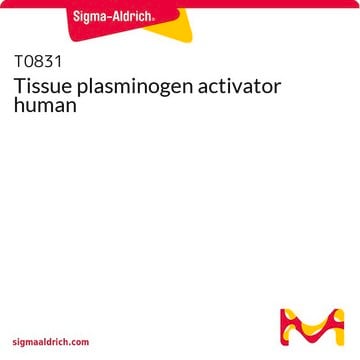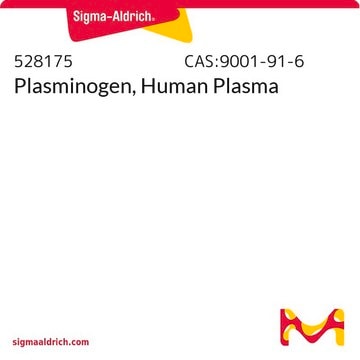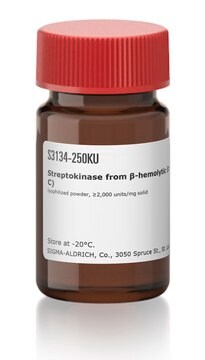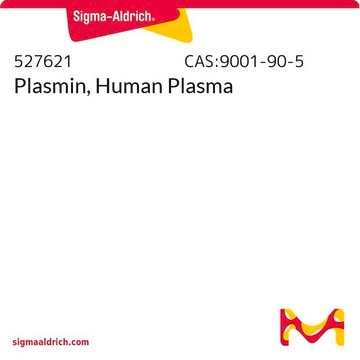P9156
Plasminogen from bovine plasma
lyophilized powder, ≥2.0 units/mg protein
Sinónimos:
Profibrinolysin
About This Item
Productos recomendados
biological source
bovine plasma
form
lyophilized powder
specific activity
≥2.0 units/mg protein
concentration
2-7% protein (biuret)
suitability
not suitable for streptokinase determination by clot formation procedure
application(s)
histology
storage temp.
2-8°C
Gene Information
cow ... PLG(280897)
human ... PLG(5340)
Biochem/physiol Actions
Other Notes
Unit Definition
Physical form
Reconstitution
Storage Class
11 - Combustible Solids
wgk_germany
WGK 3
flash_point_f
Not applicable
flash_point_c
Not applicable
ppe
Eyeshields, Gloves, type N95 (US)
Certificados de análisis (COA)
Busque Certificados de análisis (COA) introduciendo el número de lote del producto. Los números de lote se encuentran en la etiqueta del producto después de las palabras «Lot» o «Batch»
¿Ya tiene este producto?
Encuentre la documentación para los productos que ha comprado recientemente en la Biblioteca de documentos.
Nuestro equipo de científicos tiene experiencia en todas las áreas de investigación: Ciencias de la vida, Ciencia de los materiales, Síntesis química, Cromatografía, Analítica y muchas otras.
Póngase en contacto con el Servicio técnico







